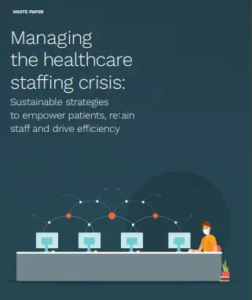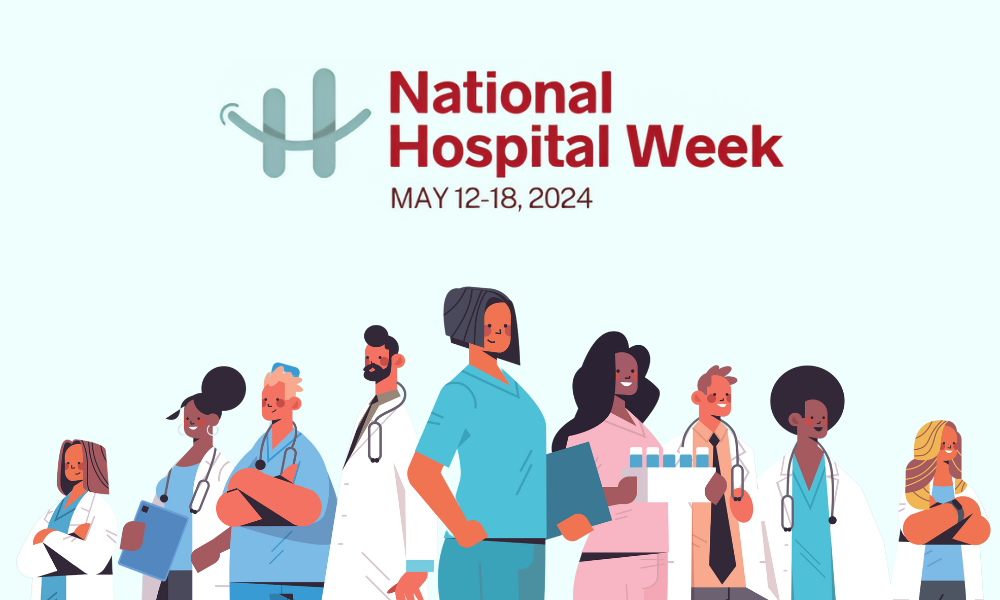In This Issue:
- SIA Projects Locum Tenens Will Continue Growing
- Why Physicians Need Work-Life Balance
- How Locum Tenens Can Help Female Providers Beat Burnout
- Emergency Medicine Staffing Services Merge to Support Rural, Community Hospitals
- Locum Tenens, Physician Staffing Firms Make Modern Healthcare List
- Physician Burnout, Staffing Shortages are Top Concerns Among Doctors Worldwide
- WalletHub IDs Best/Worst States for Physicians in 2022
- The NALTO Education Committee Presents a Webinar on Contract Negotiation
- Save the Date: 2022 NALTO Fall Fly-In
- New Physicians Practice Whitepaper on Retaining Talent & Delivering High-Quality Care
- Socially Speaking: Posts of Note from Jackson & Coker, Barton & More
- 4 Steps to Boost Your Well-being as a Doctor Amid Pandemic’s Crush
- Glenwood Hospital Halts Obstetrical Services Due to Physician Staffing Shortage
- HHS Releases $450M to Rural Healthcare Providers
- How Google Became the Most Popular Source for Hospital, Physician Search
Top Story: Staffing Industry Analysts Projects Locum Tenens Will Continue Growing
(Edited from SIA Healthcare Staffing Report, 5/9/2022)
SIA’s May 2022 US Staffing Industry Forecast update estimates the healthcare staffing industry revenue grew by 85% in 2021 to $39.8 billion, up from $21.5 billion for 2020.
The revenue increase was driven largely by an explosive 150% increase in the travel nurse segment. However, 50% increases in allied health and per diem–and a 13% increase in locum tenens revenue–also contributed to a record year for healthcare staffing.
The rate at which this country has relied upon clinical staff over the past 36 months is far from typical. Though much of the demand could be attributed to pandemic-related patient care, there were several other factors at play, contributing to the record-breaking growth.
Staff burnout, an aging clinical workforce, and heavy competition for scarce talent in certain medical specialties drove healthcare workers away in large numbers.
With 2022 nearly halfway behind us, we take a look at the sector’s subsegments to try and predict where the industry is headed.
Locum Tenens
Regarding locum tenens, our projection of $4.7 billion in 2022 represents a year-over-year increase of 7%. Locum tenens, which includes the advanced practice nurses and physician extenders, is the only clinical segment that SIA projects will see an increase in 2022.
For 2021, SIA data sources show that when COVID peaked, locum tenens declined; however, once surges quieted, increases in temporary physician volume and rates became apparent. Given this pattern, SIA expects that contingent mid-and senior-level providers will see healthy growth for 2022 and 2023. This outlook assumes the absence of another material COVID surge.
Travel Nursing
During the travel nursing boom of 2021, crisis rates became the norm as healthcare leaders scrambled to close gaps in the healthcare delivery continuum. While SIA projects a relatively modest 20% decline in this particular segment for 2022 and 2023, the decrease does not assume a significant decline in volume but rather reduced bill rates.
For perspective, the average travel bill rate in 2020 was $90 per hour. Fast forward to 2021 and that figure climbed to an astounding, but unstainable, $125 per hour. In the absence of crisis rates, reflecting receding pandemic impacts, bill rates will undoubtedly follow suit–for most specialties.
SIA’s projection also considers that while there are some areas where shortages will continue to plague healthcare leaders, the net trend will be a decline in revenue for the travel nurse segment.
Per Diem
With regard to per diem, SIA expects revenue to decline 10% year-over-year to $5.7 billion for 2022. Per diem nursing soared in 2021 because of incredible shortages among nursing staff. Per diem’s projected decline is not as dramatic as one might expect due to the likelihood that, going forward, the segment will absorb some of the volume from crisis travelers.
Allied Health
Following a surge in allied health to $6.5 billion in 2021, SIA is anticipating a 10% decline for both 2022 and 2023.
This projected decline comes on the heels of peak growth demonstrated in 2021. To that end, even considering decreases in revenue for 2022 and 2023, the market is still expected to exceed pre-pandemic levels.
The rationale for the decline in allied health for this year and next is that the segment’s performance was materially impacted by the uptick in pandemic-related respiratory therapy services, in addition to other specialties that were more heavily relied upon in 2021.
Nonetheless, the decline is relatively moderate because allied health professionals tend to be flexible, with the ability to gain the credentials needed to practice in a relatively short amount of time, which helps health systems looking to bridge staffing gaps.
In Conclusion
Overall, the healthcare outlook appears favorable if staffing partners can recruit and retain talent in a market consistently battling staffing scarcities. For SIA’s thoughts on the full staffing industry 2022 outlook, look to our May 2022 US Staffing Industry Forecast Update.
All News Is Locums
Why Physicians Need Work-Life Balance
(Edited from Medical Economics article by CompHealth President Lisa Grabl, 5/16/2022)
I really enjoy my job. I appreciate the people I get to work with and feel like the work we do really matters. That’s why I’m willing to put in extra hours and effort to ensure the job is done well. I believe physicians do the same thing. They work hard, they’re dedicated to their patients and their jobs and most love what they do. That makes putting in the extra work easy.
However, even at my busiest I don’t think I could or would average working 80+ hour weeks. I’m also not responsible for making literal life and death decisions on a daily basis. The expectations we as a society put on physicians is that they will always be there when we need them, regardless of when or where. Physicians embrace that responsibility and they are there when we need them most. This often comes at the cost of their personal lives and was a regular part of medicine for an extremely long time.
Times Have Changed
Dr. Andrew Wilner, who graduated from medical school in 1981, had this to say:
“When I entered the world of medicine, there was no such thing as physician burnout or work/life balance. It was a privilege to become a physician. The chosen few admitted to the hallowed halls of medicine expected to devote 100% of their lives to this sacred calling… as a product of that generation, the drive to excel as a physician significantly postponed my family plans, almost permanently.”
Later in his career, Dr. Wilner found it was possible to have a life separate from medicine and maintaining a successful and positive career as a neurologist while still spending time with his family.
Young Docs Want Work-Life Balance
Young physicians today have a different outlook. A recent survey by CompHealth’s parent company, CHG Healthcare, found the number-one factor new physicians are looking for in a job is work-life balance. This was followed closely by work schedule and location. What makes this more interesting is that CompHealth asked a similar question in a survey back in 2018. Work-life balance was number one on that list as well. However, in 2018, 63% of physicians listed it as their number-one factor; this year that number jumped up to 85%.
Achieving work-life balance isn’t just good for physicians. It is also good for their patients and for the facilities in which they work. Even before the pandemic, provider burnout was seen as an issue that caused adverse patient reactions. Add in COVID-19 with physician burnout at an all-time high, and negative patient impact is even higher.
Burnout Is Rampant
“For as many as 50% of physicians, burnout symptoms of cynicism, exhaustion, and reduced effectiveness overshadow their personal and professional lives,” says Dr. Wilner. “Like the coronavirus, burnout has reached global epidemic levels. Responses by academic institutions, government, and private industry to systemically address the burnout epidemic are woefully inadequate.”
Burnout is often a direct result of a life out of balance. Having that time outside of work to rejuvenate and focus on family or other interests keeps physicians fresh for when they return to work.
Locum Tenens Offers Schedule Control
In our role of placing locum tenens physicians in temporary jobs around the country I have seen physicians that were ready to quit medicine find new life in their careers. They found that taking more control of their schedules and freeing up some time for themselves made a huge difference in their personal and professional lives. The physicians that work with us still work long, demanding hours but the difference is they are choosing when and where to work and if they need a break, they can control their schedules.
Physicians are integral parts of our community and it’s important we recognize they deserve a healthy work-life balance as much as anyone else. New physicians are making job decisions based on this need and if we want the profession to grow, we need to do whatever we can to fight burnout and promote balance in physicians’ lives.
How Locum Tenens Can Help Female Providers Beat Burnout
(Edited from All Star blog post, 4/28/2022)
The gender gap among medical providers is shrinking: In 2019, the majority of medical school enrollment spots were held by women for the first time, according to the Association of American Medical Colleges (AAMC). Plus, the advanced practice professions continue to be a prominent career choice for women, who account for 82 percent of nurse practitioners (NPs) and nearly 70 percent of physician assistants (PAs), according to the Kaiser Family Foundation (KFF) and an annual report from the National Commission on the Certification of PAs, respectively.
Unfortunately, when it comes to burnout, females admit to experiencing it more often than male colleagues. As a report by EHR vendor Athenahealth (highlighted by Becker’s Hospital Review) shows, it is partially attributed to logging more hours on and off the job, as well as attending to most of the family and home responsibilities. However, working locum tenens can help mitigate many of these differences, making it an attractive career alternative for female providers.
Time is on Your Side
The role of a healthcare provider is a busy one, with clinicians often committing more than 40 hours a week to the job. For many women, the day doesn’t end with the last patient.
Of course, locum tenens providers’ days are busy, too, but shifts lack many of the administrative requirements placed on regular staff. Indeed, while on duty, you’re often able to give greater focus to patient care. For some, that redistribution of duties renews interest in the profession.
How Locum Tenens Can Help
“In my experience working full-time close to home, I was missing a lot of time with my family, like important dates, birthdays, and holidays,” says Melissa Mauro, MD, an internal medicine hospitalist who has been accepting locum tenens jobs for three years.”
Your Skills Are in Demand
Although women practice in every medical specialty, the highest representation of female physicians remains in pediatrics; obstetrics/gynecology; endocrinology; family medicine and internal medicine, per Medscape. These also are some of the specialties in high demand, especially in underserved communities—studies show both rural and urban areas contain “OB deserts” [see related “snippet” below]. Temporary staff help facilities meet the need while offering locum tenens providers the chance to leave a positive impact on a community by providing high-quality care.
The demand for advanced practice professionals continues to grow, too. From family practice to maternity and women’s healthcare to other specialties, facilities contract with locum tenens NPs and PAs to fill staffing gaps and offer people greater access to quality care.
A Beneficial Pay Scale
The Medscape Female Physician Compensation Report 2021 revealed a 27-percent earnings disparity between women and men in primary care. Male specialists banked one-third more than female peers.
Locum tenens, however, can help level the field. Hourly rates for short-term contracts are based on the area’s market value, and sometimes even exceed pay for regular staff. What’s more, many of the costs are covered for you. For example, All Star Healthcare Solutions pays the malpractice insurance for providers while on contract.
“With locum tenens, you can negotiate for your rates,” says Kimberly Sperber, DNP, NNP-BC, a neonatal nurse practitioner with six years of locum tenens experience. “All Star’s consultants are going to be your voice.”
Better Family Balance
Locum tenens opportunities empower you to decide your professional schedule and settings. If you like extended weekends instead of multiple weeks, tell your All Star consultant. If you only want the occasional temporary position closer to home, let your consultant know.
Even if you opt to embrace the career alternative full-time and like to travel to multiple locales, it’s up to you how much time to take off between positions. This flexibility encourages a family-friendly balance because time with loved ones is more concentrated, with fewer interruptions due to calls or office demands.
“My husband and daughter travel with me, and we usually choose areas near where my adult children and grandkids live. That way, I end up seeing more of my family than if I was practicing in one place,” says Zainab Shamma, MD, who specializes in pulmonology and critical care.
The Healthcare Staffing Story
Emergency Medicine Staffing Services Merge to Support Rural, Community Hospitals
(Edited from Acute Care, Inc. news release on EIN Newswires, 5/16/2022)
ERx, a physician-owned practice management and staffing company specializing in providing critical services to rural and community hospitals, has merged with ACUTE CARE, INC., a companionably similar, physician-owned organization serving the same market.
“Together, we can leverage our respective strengths and shared best practices to support and reinforce the healthcare safety net represented by our partner facilities’ Emergency Departments,” Co-CEO Mark Menadue, MD, said. He noted that for the remainder of 2022 each company will maintain its respective branding, working toward a joint identity to be revealed in 2023.
In a time of turmoil and challenge for healthcare facilities, the new organization promises cost-effective, compassionate healthcare for rural communities. “The patient is the central focus of everything we do, and the ultimate beneficiary of the resources and services that we provide,” Co-CEO Robert Devrnja said.
About ACUTE CARE, INC. and ERx
A board certified emergency medicine physician, Dr. Menadue founded ACUTE CARE, INC. in 1989 and has been its sole owner and CEO/president. The company provides emergency physician, urgent care, hospitalist, and locum tenens services to hospitals in eight midwestern states.
ERx is the successor to EMSTAT, founded in 1985 by Dr. Robert Devrnja, a Life Fellow of the American College of Forensic Examiners; he has been the sole owner and CEO since then. ERx provides emergency physician, urgent care, hospitalist, and locum tenens services to hospitals in six states, with a significant presence in Georgia and Washington.
Locum Tenens, Physician Staffing Firms Make Modern Healthcare List
(Edited from Modern Healthcare announcement, 5/14/2022)
As the healthcare industry continues to confront a myriad of workplace and economic challenges, leaders have been forced to get creative.
Modern Healthcare is proud to present the 150 companies and organizations that have been named to its Best Places to Work in Healthcare for 2022. The recognition program honors organizations that empower employees to provide patients and customers with the best possible care, products, and services.
Several locum tenens and physician staffing firms made this year’s list, including All Star Healthcare Solutions™, Aya Healthcare, CHG Healthcare, Jackson Physician Search, and The Medicus Firm.
Modern Healthcare will reveal the ranked order in two categories—one for providers and insurers and another for supplier companies—on Sept. 29 at the Best Places to Work Gala in Nashville and also in an Oct. 3 magazine supplement.
For more information on the awards dinner and conference, please contact the Modern Healthcare events team at 312-649-5459.
Physician Burnout, Staffing Shortages are Top Concerns Among Doctors Worldwide
(Edited from Medical Economics article by Todd Shryock, 4/5/2022)
US doctors more-than-twice as likely to feel burned out compared to their European counterparts
A report on physician sentiments shows that burnout and concerns about staffing shortages are a worldwide issue. Nearly twice as many US physicians (45%) say they have experienced burnout in the last two years compared to their European counterparts (25%).
The data comes from the 2022 Apollo Healthcare Predictions Report.
Staffing shortages are another area of concern, with 62% of American doctors and 49% in Europe indicating it is an issue for them. The stress of burnout and a lack of support staff has led to one in three US doctors considering leaving the profession in the past year, and this year’s number (34%) is nearly double what it was in 2018.
“2022 finds physicians deflated from the prolonged pandemic and frustrated by their waning influence in public health,” Apollo CEO and President Daniel S. Fitzgerald said. “Burnout levels and staffing concerns overshadow other, more optimistic findings this year. Our annual report provides a window into physicians’ sentiments and views on the year ahead, and this year’s report highlights the strain the pandemic is continuing to put on them.”
Additional insights uncovered through the Apollo study include:
- COVID is no longer a pandemic but instead is endemic to communities worldwide, according to 76% of all physicians surveyed.
- More than half of US respondents, and a third in Europe, have concerns over the long-term impact of COVID on patients.
- More than three quarters of doctors worldwide (82% in the US, 79% in Europe) predict negative economic impact from COVID-19 in 2022, with more people becoming ill from the more contagious variants, and more unable to work.
Significantly more US physicians believe that the year will see more patient resistance to vaccines and COVID-related treatments as ‘misinformation’ escalates. The most optimistic nations were France and Spain, with 33% and 31%, respectively, believing we would get back to a pre-pandemic world.
WalletHub IDs Best/Worst States for Physicians in 2022
(Edited from WalletHub article by Managing Editor John Kiernan, 3/24/2022)
WalletHub has released a new study comparing the 50 states and the District of Columbia across 19 key metrics. The data set ranges from the average physician annual wage to hospitals per capita to the quality of the public hospital system.
10 Best States for Medical Practice
10 Worst States for Medical Practice
Tools to Try/News to Use
The NALTO Education Committee Presents a Webinar on Contract Negotiation
![]()
Topic: “Seal the Deal – A Guide to Negotiation”
When: Wednesday, May 25, 2022, 2 PM Eastern Time (US and Canada)
Webinar Description:
During this webinar, we will discuss
- What to consider before a negotiation
- Techniques you can use during the negotiation
- And finally, how to Seal the Deal!
Learn some valuable negotiation techniques that will take the fear out of negotiating and position you to handle salary/compensation conversations with greater ease.
We look forward to seeing you!
To register, click here.
Save the Date: 2022 NALTO Fall Fly-In

Physicians Practice Whitepaper on Retaining Talent & Delivering High-Quality Care
We’re at a critical tipping point. Nearly a third of healthcare workers are considering leaving. Many more are unhappy for a multitude of reasons. Voluntary turnover rates are at 25% and rising.
If action isn’t taken now, providers will be unable to handle rebounding patient volumes. But you’re not powerless! You don’t have to accept the staffing crisis as irrevocable.
Download this whitepaper to build a strategy that retains talent and ensures high-quality care for patients. You’ll learn:
- Exactly what’s driving the staffing crisis—no theories, just facts.
- How the patient fits into practical solutions for your team.
- A 10-step action plan to develop a healthy & productive work environment.
Download the whitepaper here.
Socially Speaking
From Twitter:
How ‘Bout This?
4 Steps to Boost Your Well-being as a Doctor Amid Pandemic’s Crush
(Edited from AMA post by Jennifer Lubell, 4/27/2022)
Long before the COVID-19 pandemic, there was the physician burnout epidemic. Burnout is often linked to despair, hopelessness, and isolation, and it isn’t always easy to recognize.
“Things certainly haven’t gotten better” with burnout since the pandemic’s onset, according to Kevin Hopkins, MD, a family physician and primary care medical director for Cleveland Clinic Community Care.
Physicians can tackle burnout by setting boundaries, Dr. Hopkins said. In a presentation that was part of the AMA STEPS Forward™ webinar series, he outlined five steps to do this. The goal is to build resilience, broaden margin—the space between load and limit—and hasten recovery, said Dr. Hopkins, a senior adviser on the AMA’s practice transformation team and a pioneer in advanced models of team-based care.
1. Don’t Wait for System Changes
Burnout is a stress reaction that is largely perpetuated by certain organizational and work cultures, Dr. Hopkins said. Prevention and mitigation often depend on organizations embracing wellness. This can take a long time.
People can look inward to help them survive—and thrive—in their current work environment, said Dr. Hopkins, an AMA member. “We can’t just wait for system change and culture change.”
Committed to making physician burnout a thing of the past, the AMA has studied and is currently addressing issues causing and fueling physician burnout—including time constraints, technology, and regulations—to better understand and reduce the challenges physicians face. By focusing on factors causing burnout at the system level, the AMA assesses an organization’s well-being and offers guidance and targeted solutions to support physician well-being and satisfaction.
Find out how to recognize and respond to burnout in a fellow physician.
2. Boundaries: Identify, Prioritize, Commit to, Maintain
“How many of us haven’t felt bent, stretched, or compressed over the last few years?” asked Dr. Hopkins. One antidote is to develop the ability to withstand or recover quickly from difficult situations. This involves identifying, prioritizing, committing, honoring, and maintaining boundaries.
The first step is to make a list of actions that have the potential to create more margin and build resilience. Prioritize: rank in order what would be the most impactful changes. Pick one to three of those items, then commit to making those changes.
Honor and respect that commitment, Dr. Hopkins emphasized. “Be firm with those boundaries.”
3. Schedule Time Wisely
Maintain those boundaries by limiting your commitments. Give yourself permission to say “no,” he said. Schedule vacation time and personal downtime. Give yourself time to think and create. Exercise and plan date nights or meals with friends.
“Schedule anything that matters on a calendar and prioritize your to-do list,” he said. Perhaps your first priority is to get eight hours of sleep or exercise for 90 minutes a week.
Thinking about all these actions can be overwhelming. Dr. Hopkins advised picking three takeaway actions and starting one, sharing one with a colleague, and studying the third for future consideration.
“Don’t let uncertainty and fear stop you. Keep your eyes on the target and go for it,” he said.
Learn about research showing that doctors hit hardest by the pandemic are at higher risk of burnout.
4. Turn It Off, Take a Time-out
Margins improve by decreasing the number of decisions per day, Dr. Hopkins said. Try to handle things only once, whether it’s a meal decision or a laboratory result at the office. “Get it out of the way and move on,” he said.
Limit daily distractions. Turn off notifications, close apps, control what’s on your desktop. And when you get home—leave work at work.
It’s OK to refocus and call a timeout, he added. Box breathing—which involves inhaling, holding breath, and exhaling on counts of four—is an excellent way to hit pause for a minute. This slows your heart rate and improves focus and decision-making, he said.
Meanwhile, organizations must do their part by valuing people and relationships and prioritizing those relationships. They should provide access to mental health services and promote activities to establish a culture of well-being, Dr. Hopkins said. Physicians can look for opportunities to lead by example, and promote positive energy, he added.
Read about the three keys to a successful peer-support program for doctors.
Staffing-Related Snippets
Glenwood Hospital Halts Obstetrical Services Due to Physician Staffing Shortage
(Edited from post by Matthew Segura, KNOE-TV, 5/13/2022)
A shortage of physicians has prompted a pause in obstetrical services at Glenwood Regional Medical Center (GRMC) in West Monroe, La. Effective June 12, the “pause” is temporary, according to GRMC President Jeremy Tinnerello, “so that our team can address a physician staffing shortage.”
Tinnerello made Glenwood’s announcement just prior to The Woman’s Clinic’s announcement they’d be consolidating coverage to St. Francis Medical Center.
HHS Releases $450M to Rural Healthcare Providers
(Edited from Becker’s Hospital CFO Report article by Alia Paavola, 5/12/2022)
On May 10 HHS released $450 million in payments to rural healthcare providers to address financial challenges arising from the COVID-19 pandemic, according to the American Hospital Association (AHA). The payments came from the American Rescue Plan Act, which granted $8.5 billion in relief payments to those who served rural communities starting in November 2021.
How Google Became the Most Popular Source for Hospital, Physician Search
(Edited from Becker’s Hospital Review article by Naomi Diaz, 4/29/2022)
Google is the most popular source for searching for a physician or hospital, more popular than physician websites, healthcare sites, or social media, VentureBeat reported April 28. It also has become the number one viewed site for healthcare consumers, according to the report.
The reasons? Likely Google Search features that allow healthcare providers to identify the insurance networks in which they participate, whether they accept Medicare, and what languages are spoken at their offices–as well as an appointment-booking application.










